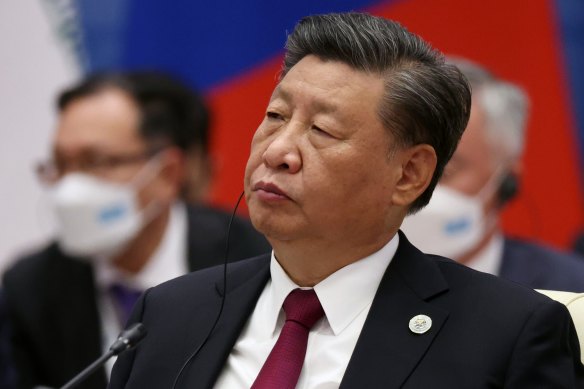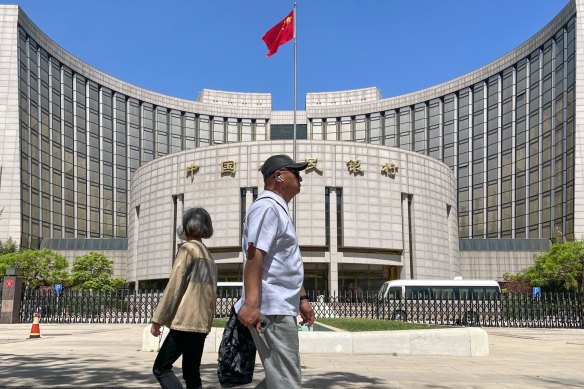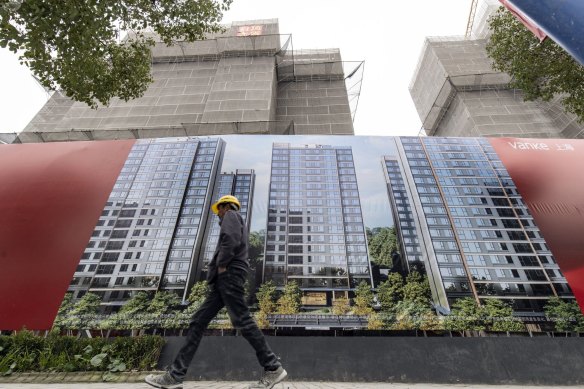Opinion
Xi just doubled down on his big China bet
Stephen Bartholomeusz
Senior business columnistLast week’s “third plenum” of China’s Communist Party may have disappointed with its lack of any plans for large-scale stimulus, but its central bank has done its little bit to support a sluggish economy with an unexpected interest rate cut.
On Monday, the People’s Bank of China cut two key policy rates by 10 basis points, its first rate reduction in nearly six months, lowering the cost of mortgages and other borrowing.

Xi Jinping is doubling down on his economic strategies first articulated at the third plenum in 2015.Credit: AP
While it’s a small move and one constrained by the bank’s concern about yuan weakness, it’s a sign that the government is worried about the dwindling momentum in the economy, which posted below-target growth of 4.7 per cent in the second quarter. The official target for GDP growth this year is 5 per cent.
In the lengthy statement, or “resolution”, issued at the weekend detailing the plans the party has mapped out for the next five years at its twice-a-decade third plenum, it was notable that the Xi Jinping-dominated leadership has no plans to implement the large-scale stimulus that most external analysts believe is needed to both boost growth and change its composition.
While there was a passing mention of the need to “refine long-term mechanisms for expanding consumption” and another to “actively expand domestic demand”, the resolution didn’t detail those mechanisms, let alone announce any near-term measures for boosting consumption.
Indeed, it is clear from the statement that Xi is doubling down on the strategies first articulated at the third plenum in 2015, when the “Made in China 2025” strategy was unveiled, with its focus on advanced manufacturing and dominance of high-tech sectors such as artificial intelligence, aviation, aerospace, green energy, critical minerals, medical equipment and biotechnology.
Xi’s mantras of “high-quality development” and “new productive forces” featured in the text of the very lengthy statement. It is apparent that the prioritisation of China’s security, both economic and geopolitical, and its ambition of wresting technology leadership from the US has been maintained.
China wants to move up the value chain, secure its supply chains for critical products, improve the productivity of its industrial base and “promote revolutionary breakthroughs in technology, innovative allocation of production factors and in-depth industrial transformation and upgrading”.
The challenge for that strategy is that it has brought China directly into a trade conflict with the US, which has responded with tariffs and sanctions. These will inevitably be far tougher if Donald Trump regains the US presidency and follows through with his plan for a 10 per cent tariff on all imports and a 60 per cent tariff on imports from China.
The European Union has better relationships with China but, alarmed by the prospect of a flood of Chinese-built electric vehicles, solar panels and wind turbines (among other products) is also moving to erect trade barriers to protect its own industries.

The People’s Bank of China cut two key policy rates by 10 basis points, its first rate reduction in nearly six months.Credit: Bloomberg
With domestic confidence and consumption weak, there is significant excess capacity within China’s industrial base, leading to increased volumes of exports at decreasing prices – hence the growing concern and backlashes within its offshore markets.
Even though an increasing proportion, estimated to be about a quarter, of China’s companies are now incurring losses, there isn’t the large-scale rationalisation and restructuring that would be undertaken in a Western economy.
At some point, if it wants to defuse the threat of a wider protectionist response, China needs to either reduce the output from its manufacturing plants or increase domestic consumption to divert some of the demand. Neither seem to be part of its strategies for at least the next five years.
The third plenum focuses on longer-term economic strategies. It shouldn’t have been expected to produce detailed or immediate policy announcements.
It is possible those might come when the Politburo next meets towards the end of this month. However, Xi’s dominance of the party and country means it is improbable that there will be major shifts in policies that prioritise “quality” development and China’s economic and geopolitical security, and the party’s expanded role in directing the economy, over the rate of growth.
At the centre of China’s current economic challenges is the continuing implosion of its property sector, in which prices continue to fall and more than 20 million apartments remain incomplete after the country’s developers have fallen over like dominoes.
While the resolution identified real estate as a key risk whose solution would be prioritised, there was no guidance as to the form any solution might take.
Earlier this year, Beijing did budget the equivalent of about $62 billion to enable local governments to acquire unsold properties, but that is a fraction of what could be required to get rid of the massive excess of property hanging over the market.

China’s property meltdown is one of many economic problems Beijing is grappling with.Credit: Bloomberg
What the plenum did address, again broadly, was the impact of the real estate crisis on local governments.
In China, the central government raises most of the governments revenues and local governments do most of the spending. While the local governments generate a little more than half the revenue, they do nearly 90 per cent of the spending on public works and services like education and healthcare.
To balance their books, local governments established off-balance-sheet financing vehicles to raise debts now estimated at more than $14 trillion, and fuelled a property bubble by selling land to generate revenue. They became very dependent on those land sales.
With the property bust local governments are now under acute pressure.
At the plenum party officials pledged to give them more “autonomous fiscal capacity”, allowing them to raise more revenue in their own right. They also decided to establish a “long-term mechanism” for addressing the unsustainable debt levels within the financing vehicles and to allow local governments to raise more funds directly by issuing special bonds.
That might be a response to the effects of the property market meltdown rather than a serious attempt to deal with the core issues such as the extent of the oversupply of housing and the household caution the falling prices have produced. However, if Beijing follows through, it would be a necessary and sensible response to a potentially destabilising imbalance.
There was a lot of ambitious rhetoric and references to reforms in the 60-point statement issued after the plenum.
It is unlikely, however, that Xi will deviate from the shift towards a state-directed economy with an all-in bet on China’s ability to grab global dominance of key advanced manufactures and technologies over the next decade, regardless of the already-heightened geopolitical tensions his strategy has produced.
The Business Briefing newsletter delivers major stories, exclusive coverage and expert opinion. Sign up to get it every weekday morning.